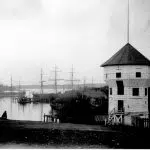
Stung by Iran tragedy, Canada leading bid to better protect airliners
WASHINGTON — Canada is taking a lead role in what Transport Minister Marc Garneau said Thursday he hopes will become an international effort to better protect civilian airliners around the world from being shot down over conflict zones.
Garneau was in the U.S. capital to promote what he’s calling the Strategy for Safer Skies — a Canadian-led multilateral effort to improve co-ordination, communication and intelligence-sharing between civil aviation agencies and airlines around the world.
“As a global community, we cannot add any more names to the list of lives that have been lost, of families whose lives have been turned upside down,” Garneau told an audience of aviation executives, industry leaders and experts at a summit meeting hosted by the U.S. Chamber of Commerce.
“We must find ways to better manage civil aviation above conflict zones.”


